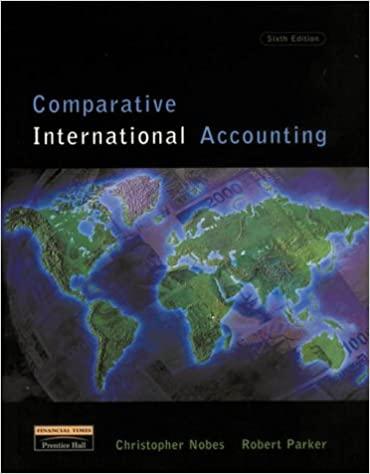Question
CHRISTOPHER BROWN Patents operate by offering innovators a temporary monopoly. New medication development, testing, and marketing are all extremely expensive processes for pharmaceutical companies. It's
CHRISTOPHER BROWN Patents operate by offering innovators a temporary monopoly. New medication development, testing, and marketing are all extremely expensive processes for pharmaceutical companies. It's estimated that new construction will cost as much as $2.6 billion, according to some estimates. Research and development for most "created" pharmaceuticals can run into the hundreds of millions, if not billions of dollars, only to fail in clinical trials and never reach the market, costing the producer a significant amount of money. Patents give medicine companies the security they need by allowing them to charge a greater price for their products while still recovering the costs of their R&D. The manufacturer must pay for the development of the drug in question as well as the development of all previous unsuccessful drugs. The promise of protection encourages drug producers to innovate, and without it, no company would ever agree to pay the massive financial costs of R&D... Since competitors' ability to duplicate and sell the same drug under a generic brand name causes profits to plummet, drug producers refer to the loss of patent protection as the "patent cliff." When it comes to the patent cliff, Eli Lilly has been there before. After the expiration of the Zyprexa patent in 2011, which provided $5 billion in income annually, sales of Cymbalta ($4 billion) and Evista ($1.3 billion) plummeted by 58 percent and 74%, respectively. When it comes to profitability and market share, Eli Lilly (and other pharmaceutical companies) must maintain coming up with blockbuster pharmaceuticals (those worth over $1 billion in sales per). Between 2013 and 2016, the patent protection on several of the world's most profitable medicines will expire. Currently, these blockbuster pharmaceuticals produce over $130 billion in sales each year in the United States alone, and pharmaceutical companies like Lilly need to continue making money and holding market share while simultaneously selling more of their products. Between 2013 and 2016, the patent protection on several of the world's most profitable medicines will expire. The annual sales of these blockbuster medications alone in the United States exceed $130 billion. In the past, Lilly's patent on Prozac, a depression medicine used by 40 million people every day, lapsed. "The situation we had in the mid-1990s, where 35 percent of our revenues were dependent on Prozac, will not repeat itself," stressed then-CEO Sidney Taurel. The R&D budget at Lilly was increased by 30%, 700 more scientists were hired, and Lilly's 7,000 researchers were instructed to focus on medications that could generate $500 million in sales per year under Taurel's leadership. However, raising the number of employees or the R&D budget aren't alternatives this time. Eli Lilly had to reduce expenses because to the probable revenue loss. As a result, they terminated 5,500 employees and saved $1 billion annually. According to Miller Tabak & Co. analyst Less Funtleyder, "Big Pharma has had a difficult year once again (cutting 37,000 jobs). Lilly is by no means stranded on an island by herself. However, they face the most immediate problem because to the steepness of their patent cliff." Now that Eli Lilly has completed these short-term tasks, the long-term challenge is to expand their medication development pipeline. One of the business's pipeline hopes had to be abandoned due to FDA approval issues, and this represents significant sunk costs for the company. By 2023, the business intends to launch 20 new medicines, but how will they do that? It's obvious that they need to promote more rapid and less expensive innovation, which is never simple. Researchers feel that high expenditures, centralised permission for allocating research resources, and compartmentalised research (where only a small number of people know and comprehend what the rest of the organisation is working on) all inhibit creativity and impede the decision-making process. Considering this, what steps may Lilly take internally to restructure itself in order to increase communication across product development teams and accelerate the entire drug development process? Sources: Lilly: Life after Prozac," Business Week, 23 July 2001, 80-82; P. Loftus, "Patent expirations loom for Lilly," The Wall Street Journal, 12 August 2009; P. Loftus, "With patents expiring, Eli Lilly retool se." S. Mukherjee, "Pharmaceutical Giant Eli Lilly Wants to Launch 20 New Drugs by 2023." Fortune Magazine, 24 May 2016. http://fortune.com/2016/05/24 The Wall Street Journal, 6 July 2010, B5; The Indianapolis Star, 2 October 2010, A1 (J. Russell, "Cuts at Lilly deliver painful progress") The Quick and Dire Answer I The company plans to bring 20 new pharmaceuticals to market by the year 2023, therefore compare Eli Lilly's functional and product departmental izat ion structures. According to Eli Lilly, in order to bring 20 novel therapies to market by 2023, they need to foster more rapid and less expensive innovation. What role does re-engineering play in this effort?
Is it possible for Eli Lilly to transform into a modular business? a number of options are provided In Eli Lilly, a product manager works on the product lines they supervise with people from several functional divisions (such research, design, testing, and marketing). This is an illustration of what kind of business structure you've got. Matrix departmental izat ion; regional division; customer division; functional division; division by function A manager of accounting gives advice to the manager of product testing, for example, on the costs of certain testing lab instruments. the line function, and the line authority, respectively d. the function of the personnel
Step by Step Solution
There are 3 Steps involved in it
Step: 1

Get Instant Access to Expert-Tailored Solutions
See step-by-step solutions with expert insights and AI powered tools for academic success
Step: 2

Step: 3

Ace Your Homework with AI
Get the answers you need in no time with our AI-driven, step-by-step assistance
Get Started


